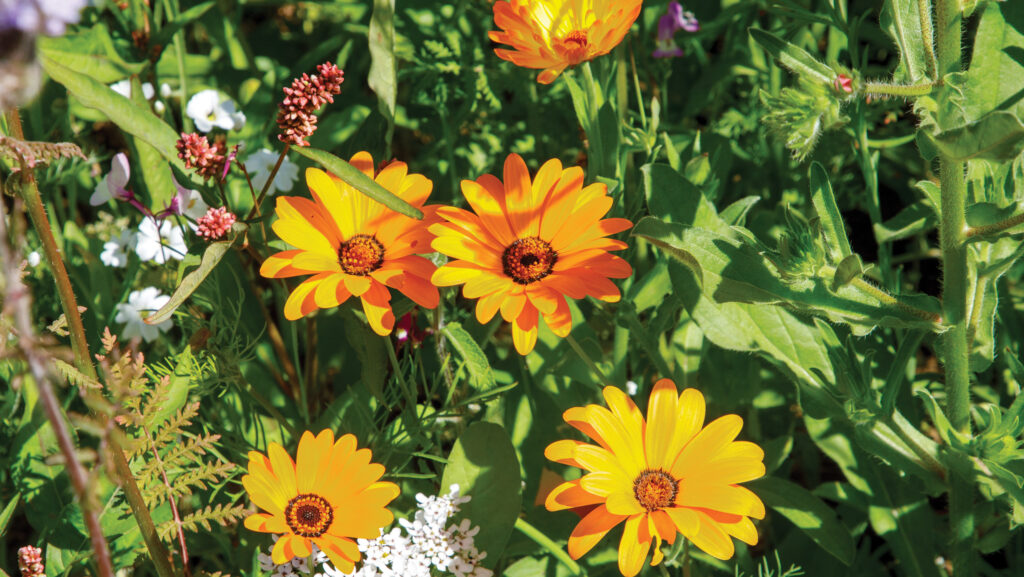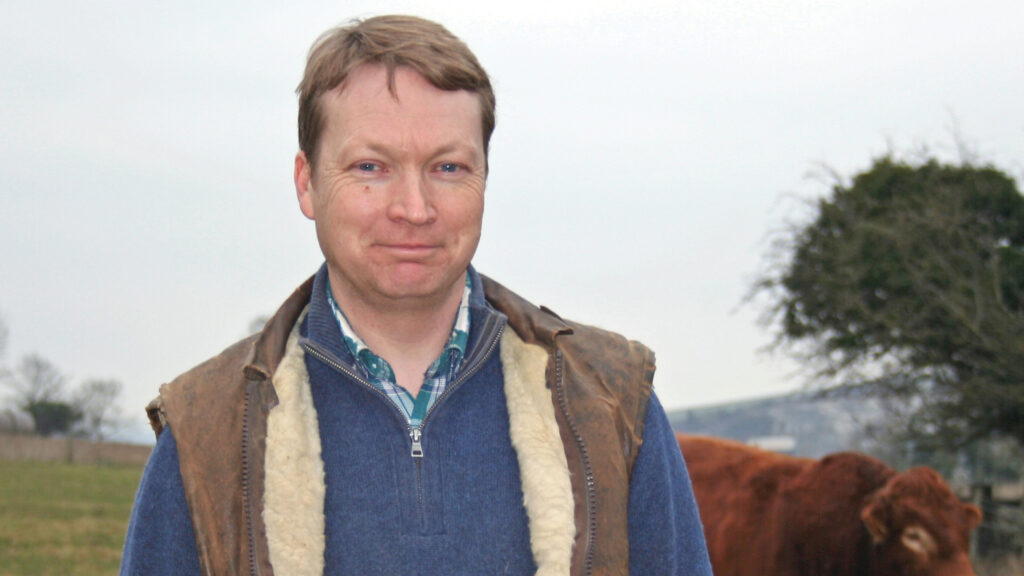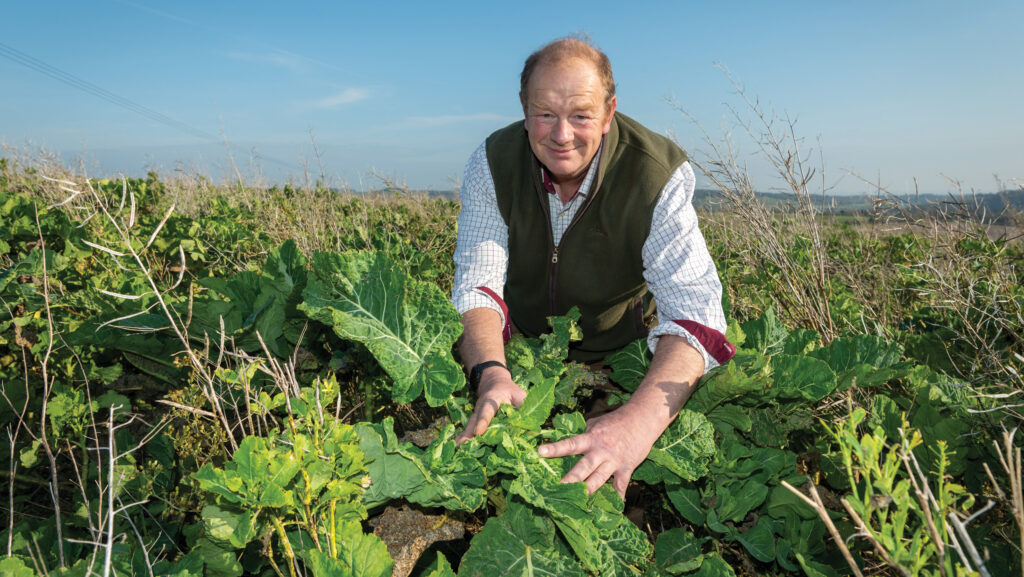How beneficial insects can help nature and food production
 © GNP
© GNP It will come as little surprise to many to learn that a long-running study into insect populations in cereal crops – the Sussex Study – has shown a decline, linked to the intensification of agriculture over many decades. What is startling, however, is the extent of that loss.
A recent assessment of the study, which dates back to 1968, by the Game & Wildlife Conservation Trust (GWCT), shows that insect abundance had declined by 37% in the 50 years up to 2019.
See also: Why two growers want to make more of beneficial insects
Numbers of ground beetles and ladybirds have fallen by 80% and 78% respectively, both classed as beneficial predators, while a 90% reduction was recorded in numbers of aphids, a food source for invertebrates.
The GWCT says it has yet to analyse results from the same farms in 2020-24 after actions were taken to protect invertebrate populations, but early indications suggest no further decline over those four years.
Dr Julie Ewald, who co-authored the peer-reviewed paper, says the farmers involved in the Sussex Study have used agri-environment options, such as introducing conservation headlands and grass margins, alongside reducing their insecticide use in cereal crops.
“They have upped their game, not only in how much habitat they are providing, but in its quality,” she says.
Case study: Hugh Passmore, Lancing, West Sussex
Mixed farmer Hugh Passmore grows about 200ha of cereal crops near Brighton on the south coast, but never applies insecticides in the summer, and very rarely in the autumn.
As a consequence, and in combination with measures including undersowing barley with grass leys and providing multiple areas of habitat, such as 2m beetle banks between fields, there are abundant populations of beneficial insects.
Mr Passmore, who farms 344ha with his uncle, Chris, says the late Dick Potts, former GWCT director-general, had a big influence on the way he farms.
“I remember Dick telling me that it only takes one application of an insecticide in the summer and it will be 10 years before beneficial insect numbers re-establish to the numbers they were at before that was applied, but it also means that you are drawn into the cycle of relying on pesticides because you don’t have those insects to eat the pests,” he says.
“The only time we would use insecticides is in the late autumn for barley yellow dwarf virus (BYDV) in the wheat, but we monitor aphid numbers and only spray when we need to.
“At that point, beneficial insects are generally hibernating.”
One of the favourable invertebrates that is evident on his farm is the sawfly, whose larvae are a very good source of feed for the chicks of ground nesting birds, including skylarks and grey partridge.
All the cereals are grown for the seed market – a rotation of two years of winter wheat followed by three years of spring barley.
The final crop of barley is undersown with grass to establish a three-year ley.
“There is a lot of chick food in the undersown crop and autumn stubble,” says Hugh.
Catch crops of forage rape and mustard are grown between the crops of barley.
Mr Passmore has also created multiple beetle banks. “Every field is fenced, and there is at least 1m of grass on the inside of the headland, which means there are 2m strips of grass between the fields.
“We didn’t set out with the purpose of creating those refuges, but happily it worked out that way.”

Hugh Passmore © Isobel Bretherton
Benefits
Studies have pointed to the benefits of having 10% of a farmed area dedicated to habitat.
But some of the farms in the Sussex Study exceed that, making creative use of wild bird cover and investing in more expensive mixes.
As a result, numbers of some beetle species are now thought to be higher than in the 1970s.
Introducing different mixes is not without effort, Dr Ewald admits.
“Farmers have to have their heads on when thinking about how to plant them,” she says.
“It is just as important to put in the effort to establish these mixes as it is with any other crop. Half the battle is getting the seed to take and to get a good stand.”
Field guide
Encouraged by the results of the Sussex Study, the GWCT has produced a practical field guide to agri-environment options that can increase invertebrate populations on farmland.
Many are based on research by the Allerton Project, the GWCT’s demonstration farm at Loddington in Leicestershire, where it has been possible to reverse insect declines and increase farmland bird numbers, without affecting crop yields.
These include simple management techniques, from beetle banks and hedgerow restoration, to planting pollinator mixes (see panel).
The GWCT is encouraging farmers and agronomists to use the guide to inform their decision-making, choosing the most suitable options for their own land to achieve outcomes that are favourable for both wildlife and crop protection.
Tips to bolster insect life
Beetle banks
Beetle banks are particularly good at harbouring predatory beneficial insects such as ground beetles, ladybirds and spiders. When in close proximity to crops, the invertebrates will eat nearby pests.
Broad- and fine-leaved grasses can provide different functions within beetle banks. For example, tussock-forming grasses are important as overwintering sites for invertebrates, and herbs can be added for greater diversity.
Beetle banks should be raised and free draining, and can be effective for eight years or more.
Planting nectar flower mixes
The Game & Wildlife Conservation Trust (GWCT) says pollen and nectar habitats are an easy way to boost flower-rich habitats and are often targeted at supporting bumblebees.
They usually include a range of clovers, bird’s-foot trefoil, sainfoin, lucerne and vetches, and will appeal to ladybirds, parasitic wasps, hoverflies, predatory bugs and mites.
They will persist for three to four years, and are designed to be rotational if needed.
Creating a wildlife plot
Lasting up to 10 years, a wildlife plot provides the best seed mix for insects, both in quantity and species variety.
It’s also a great provider of insect food for farmland bird chicks in summer, and contains plants highly attractive to a range of bees.
The secret to a plot’s longevity is the inclusion of biennial and perennial native plants.
These can include everything from triticale, sunflowers, kale, millet and stubble turnips, to sweet fennel, sainfoin, chicory, and kidney vetch, with most seed merchants able to adjust species mix to suit soil type and management regime.
Cutting and cultivating half the plot each year to maintain plant diversity helps to sustain plots for longer.
Expect to find soldier beetles, lacewings, hoverflies, ladybirds, spiders, predatory flies, mites and bugs, and parasitic wasps.
Shrubs
Shrubs can give a more diverse and different structure to a rural landscape, providing year-round food, habitat and shelter for crop pest predators.
The GWCT recommends dog rose, spindle, dogwood, privet, bramble, holly, hazel and hawthorn.
Habitats made up of shrubs can develop naturally in some areas, within or adjacent to woodland, or in field corners next to hedges, for example.
Protecting existing areas from grazing and browsing may help the habitat to establish.
Case study: Dominic Gardner, Angmering, West Sussex
Growing 1,000ha of cereals and pulses with minimal insecticides applied in the summer is testament to how adapting a system can allow predator insects do the job of controlling pests.
Contract grower Dominic Gardner saw the futility of prophylactic spraying 30 years ago after a year when he had a severe infestation of aphids.
“After that, we were continually treating based on the prospect that we might get it again, but by doing that, you build up a resistance to those products,” he says.
Instead, Mr Gardner now grows resistant varieties and uses pheromone traps to monitor midge numbers.
Aphid controls are only applied with advice from his agronomist if numbers rise above a certain threshold.
Mr Gardner, who farms near Angmering in West Sussex, also grows varieties that are resistant to BYDV on heavy, poor draining land that requires early drilling, but sometimes needs to apply controls in the autumn.
“At this point in the season, it is less of a problem for insects because they have migrated to the headlands,” he says.
Mr Gardner has ditched some crops that were heavily reliant on insecticides, including beans which suffered badly from bruchid beetle damage if not sprayed multiple times.
“We asked ourselves if it was morally right to try to control something that we couldn’t control without regular spraying in the hope that we might get a crop that achieved human consumption standard.
“We are better off growing a fallow crop through the Sustainable Farming Incentive and get paid for that.”
Getting the timing right to allow good establishment is important for pest control too, helping the emerging crop to “beat the bugs”, he adds.

Dominic Gardner © Scott Ramsey
